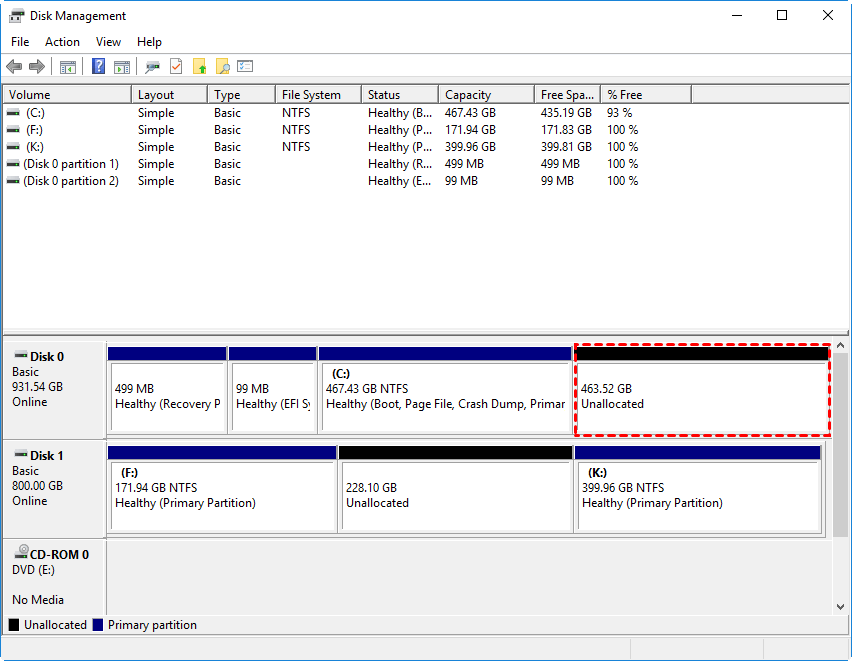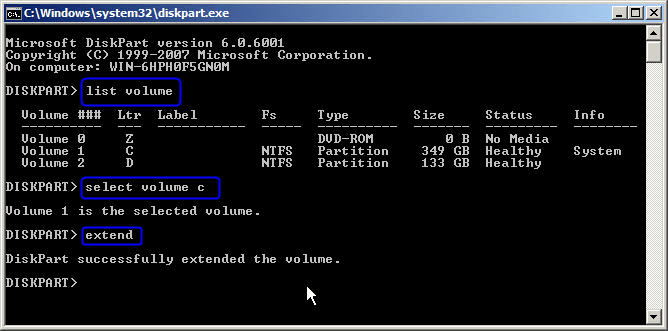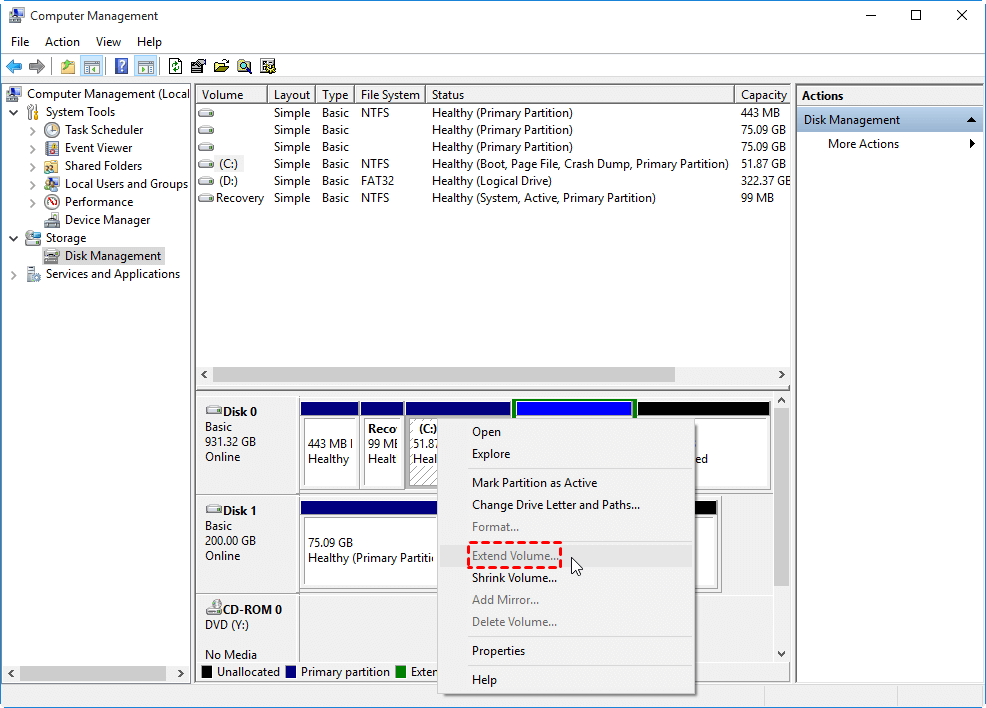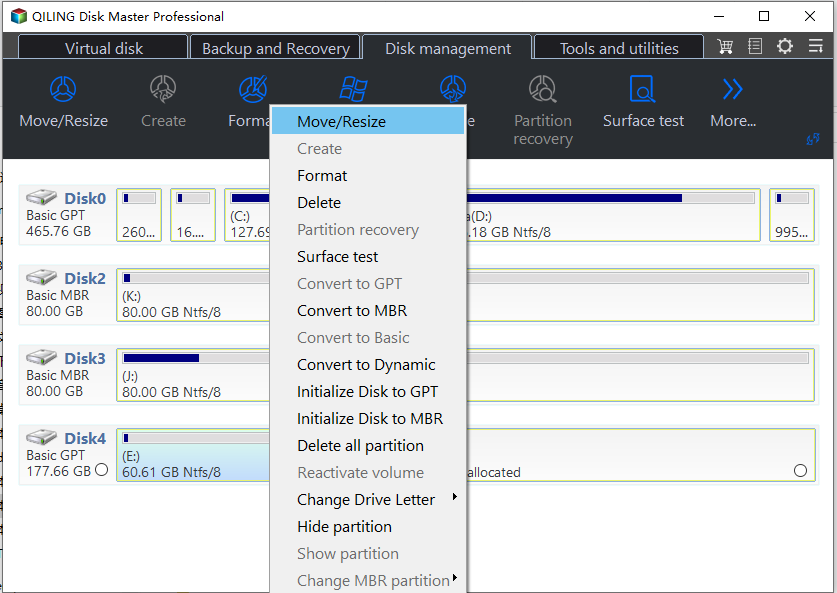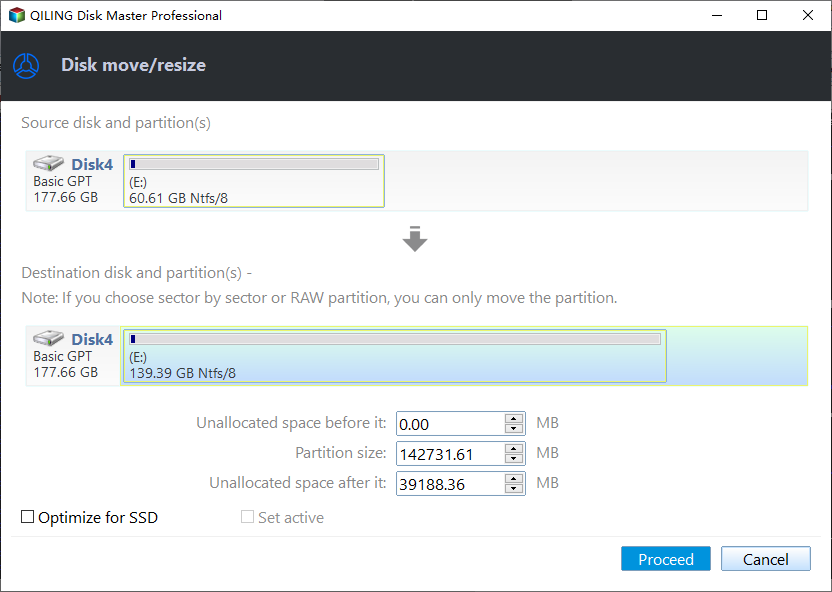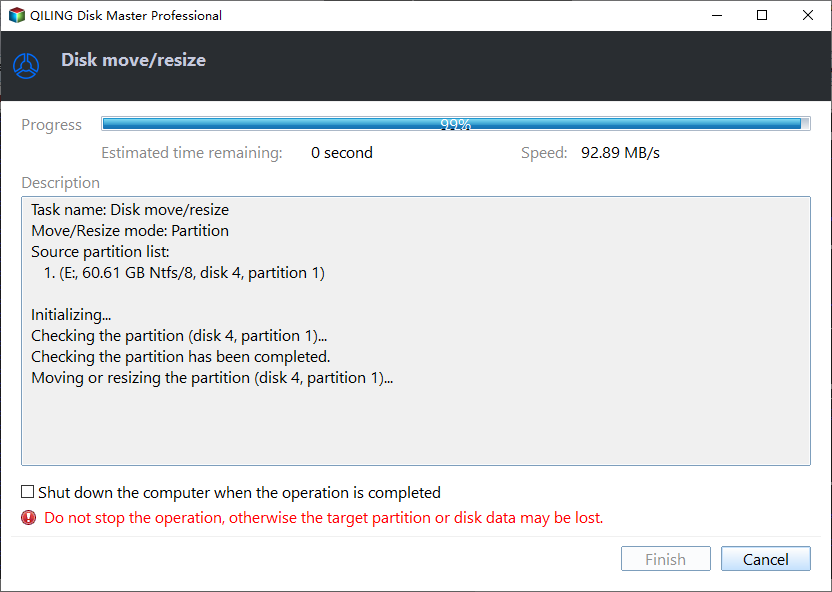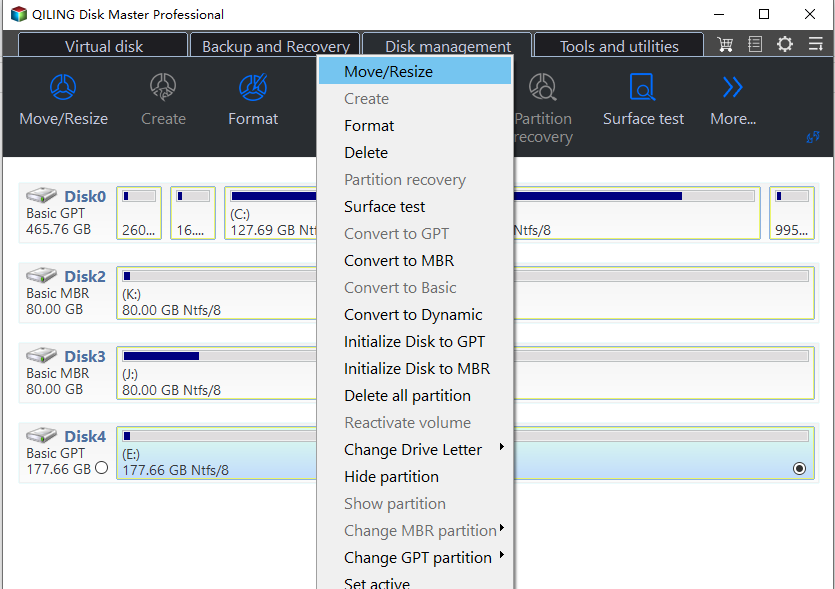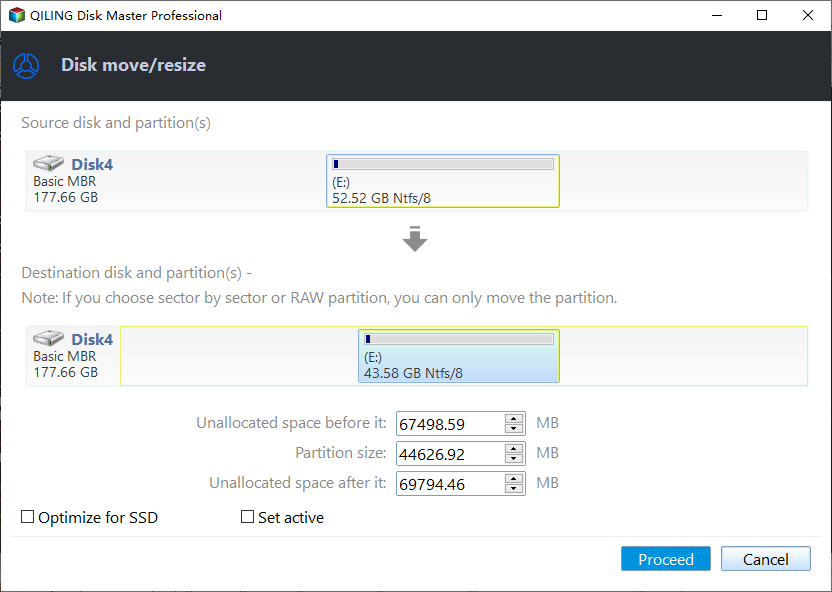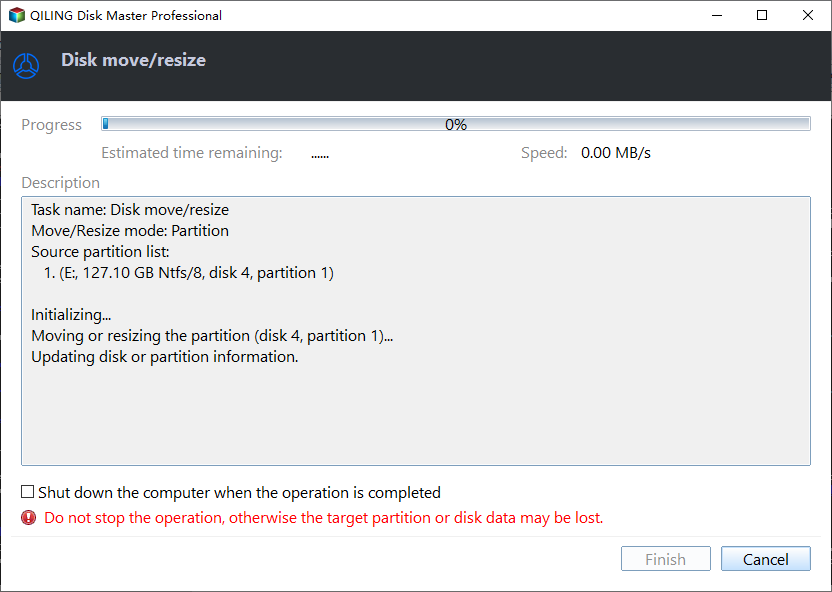How to Move Unallocated Space to C Drive in Windows 11, 10, 8, 7?
Why move unallocated space to C drive?
Unallocated disk space refers to the unused hard drive space on your disk. It won’t show up in Windows Explorer, yet you can check if you have unallocated space in Disk Management by typing “diskmgmt.msc” in the “Run” box. Moving unallocated space to the C drive in Windows 11, 10, 8, and 7 is a good way to enlarge the system drive, so that you can install more programs there and keep other programs functioning well. The performance of your system drive will directly affect the function of the OS and software, games in particular. More free space makes creating personal files easier.
Some computers come with small-sized system partitions when produced by manufacturers. If there is plenty of free space in other partitions like D, and E, you can allocate free space from each partition to the C drive directly. All in all, you may hold other factors that force you to extend the system drive. The most important thing is to find how to move unallocated space to C drive using the simplest method.
If there is no unallocated space for you to enlarge the C drive, you can free up space on the C drive by running Disk Cleanup, deleting unnecessary files, and moving installed apps from C drive to another drive.
How to allocate unallocated disk space to C drive in Windows 11/10/8/7?
The method you choose to add unallocated space to the C drive is determined by the location of unallocated disk space. Generally speaking, you have three ways to complete this task with built-in Disk Management, Diskpart, and third-party software.
Method 1. Add unallocated space to C drive in Disk Management
As covered before, the location of the unallocated space affects your choice. If it is next to the C drive and on its right side, you can add it to the system (C:) drive directly in Disk Management. Open Disk Management, right-click C drive, and select “Extend Volume” in the menu. The only thing left to do is to follow the wizard to resize the system partition.
Method 2. Transfer unallocated space to C drive via Diskpart
Likewise, you can directly extend C drive to the unallocated space when the space is adjacent to C drive on its right side. Let’s get to know how to work this out using CMD.
1. Press Windows + R key to open Run. Type diskpart and press Enter. Run as administrator.
2. Type the following commands in turn and each command has an Enter followed by.
· list volume
· select volume c (or select volume 1)
· extend (or extend size=10240 which means you’ll extend by 10GB in size)
· exit
This is how to move allocated space to C drive via Windows built-in tools. But they can only work when the unallocated space is adjacent to the C drive on the right side. If the unallocated space is separately distributed on the hard drive, for example, the unallocated space after D drive in the screenshot, you will find the “Extend Volume” grayed out in Disk Management, and you’ll get Diskpart failed to extend the volume error in Diskpart.
In those situations, you need to delete the in-between partition, extend C drive, and then restore the partition. So, is there any way to move unallocated space to the right side of the C drive and extend it successfully? Luckily, the last method can help you out.
Method 3. Move unallocated space to C drive via free partition manager
To add unallocated space to C drive flexibly, you can try the free partition software, Qiling Disk Master Standard, a disk and partition manager for Windows 11/10/8/8.1/7/XP users.
Its “Move Partition” feature can help you move the unallocated space to the right side of the C drive, and then you can extend the target partition easily. Besides, the “Merge Partitions” can directly merge all unallocated space on the hard drive to the C drive without formatting or deleting partitions even when the unallocated space is not contiguous to the primary drive.
Step 1. Install and start Qiling Disk Master Standard. Right click C drive and select “Move/resize Partitions”.
Step 2. Tick all unallocated space you want to add into the C drive.
Step 3. Confirm the virtual outcome. Click “Proceed” to execute the operation.
Since there is a system drive involved in this operation, it will complete allocating in restart mode.
Further reading: Extend C drive without unallocated space
If your disk has no unallocated space anywhere, but there is more than one drive on the disk, you can upgrade to Professional edition, which provides more better ways to extend partition: “Allocate Free Space” allows you to directly transfer free space from one partition to another by 3 steps.
Step 1. Launch Qiling Disk Master, right-click the partition which you want to allocate free space from, and select "Move/resize".
Step 2. Type in the size of the free space which you want to cut from one partition and this free space will be directly added to the destination partition.
Step 3. Click "Proceed" to execute this operation.
Then your C drive will be extended.
Summary
You can easily move unallocated space to C drive in Windows OS with Qiling Disk Master. You have options to merge data partitions (say D, E drive) to system drive as you wish using the same feature.
As a matter of fact, it can do many other things, for example, it enables you to install Windows 10 on the external hard drive and realize BYPD with a “Windows to go Creator” wizard. When upgrading the hard drive, the “migrate OS to SSD” wizard greatly matters. To add unallocated space to the C drive in Windows Server 2008/2003/2012/2016/2019/2022 without deleting, please refer to Qiling Disk Master Server Edition.
Related Articles
- PC Slow Down? How to Remove Bloatware on Windows 10/11
Want to remove bloatware on a new computer by the manufacturer? This post comes to help you trim off this unwanted software pre-installed on Windows 11 and Windows 10. - Windows 10 Drive Converted to RAW Format, How to Fix It
What should you do when your Windows 10 drive converted to RAW format? This short page focuses on this issue and guides you on this issue. - Your Best Guide to Clone Windows to M.2 SSD [2024 Tutorial]
Do you want to know the process to clone Windows to M.2? You can find the right ways and complete the steps with the following tutorial. - How to Partition A USB Drive Windows 10 [Step-by-Step Guide]
This article will teach you how to partition a USB drive Windows 10. You will know three ways to partition a usb, and you can choose the best suitable one to make your USB better used.
